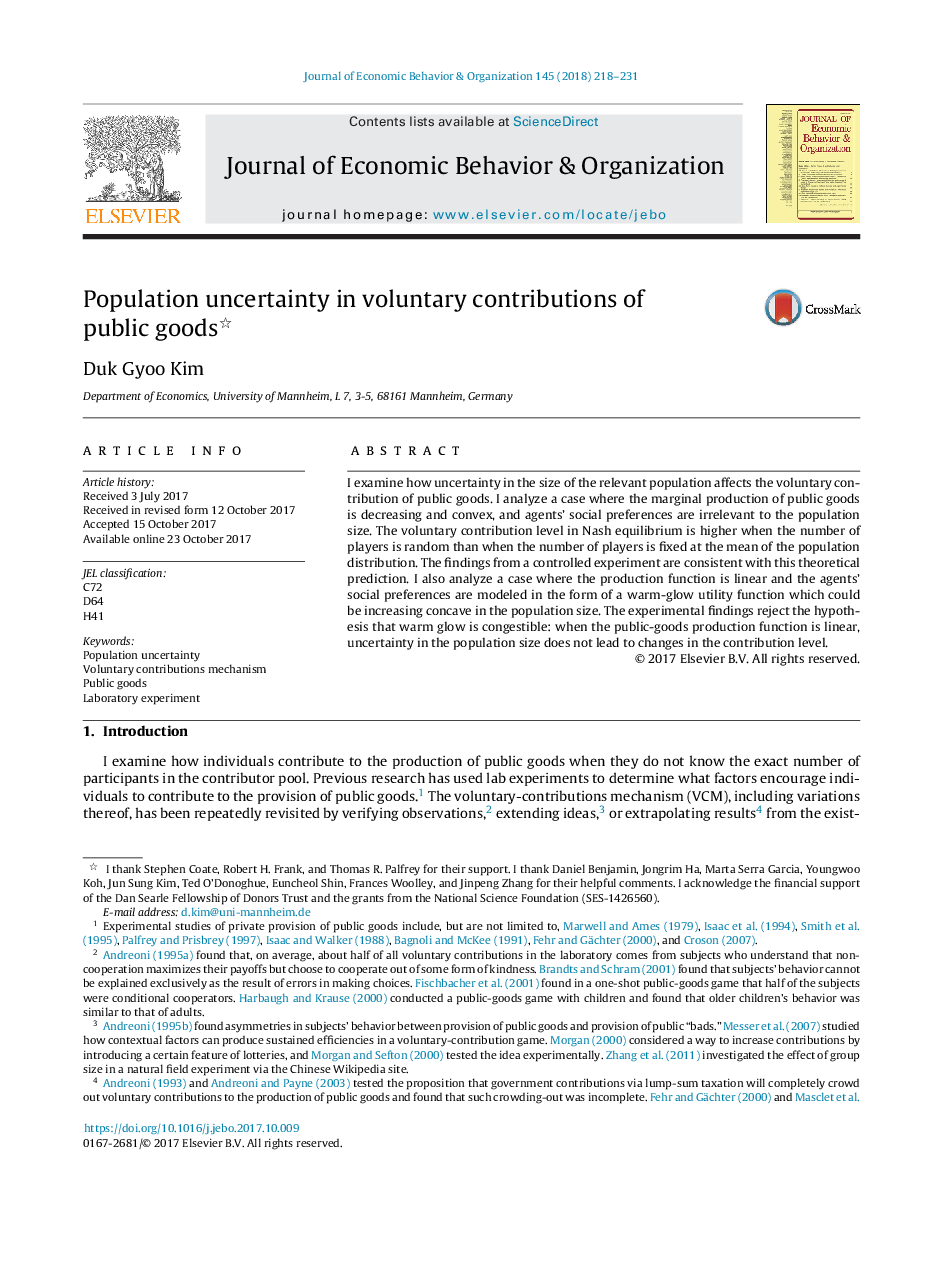| Article ID | Journal | Published Year | Pages | File Type |
|---|---|---|---|---|
| 7242687 | Journal of Economic Behavior & Organization | 2018 | 14 Pages |
Abstract
I examine how uncertainty in the size of the relevant population affects the voluntary contribution of public goods. I analyze a case where the marginal production of public goods is decreasing and convex, and agents' social preferences are irrelevant to the population size. The voluntary contribution level in Nash equilibrium is higher when the number of players is random than when the number of players is fixed at the mean of the population distribution. The findings from a controlled experiment are consistent with this theoretical prediction. I also analyze a case where the production function is linear and the agents' social preferences are modeled in the form of a warm-glow utility function which could be increasing concave in the population size. The experimental findings reject the hypothesis that warm glow is congestible: when the public-goods production function is linear, uncertainty in the population size does not lead to changes in the contribution level.
Related Topics
Social Sciences and Humanities
Economics, Econometrics and Finance
Economics and Econometrics
Authors
Duk Gyoo Kim,
